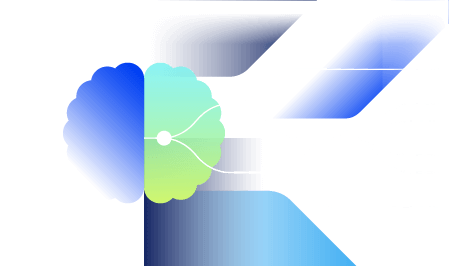What is a foundation model?
Definition and Importance of Foundation Model
A foundation model is a large-scale artificial intelligence (AI) model trained on vast, unlabelled data such as text or code.
What sets these models apart is their ability to be adapted or “fine-tuned” to perform a wide range of downstream tasks, typically with minimal additional training data specific to those tasks. Think of them as highly versatile starting points for various AI applications.

The concept for the model code emerged from advancements in deep learning models, particularly in intelligence architectures like Transformers, which have proven exceptionally effective at capturing complex patterns and relationships within massive datasets.
Instead of training a separate model from scratch for every specific AI task (such as sentiment analysis, language translation, or image captioning)—often involving distinct algorithms like linear regression for prediction tasks or convolutional networks for specific image recognition jobs, each requiring tailored, labelled data—a foundation model provides a powerful, pre-trained base.
This base model already possesses a significant understanding of language, images, or other data modalities learned during its extensive initial training phase.
Importance of foundation models
The use of foundation models marks a significant paradigm shift in AI development. Their importance stems from several key factors:
- Efficiency and scalability: They drastically reduce the need for task-specific data and computational resources for many applications. Instead of starting from zero, developers can leverage the pre-existing knowledge within the foundation model, making the development of new AI capabilities faster and more efficient.
- Versatility and adaptability: A single foundation model set of code can serve as the backbone for numerous different applications across various domains. This adaptability makes them compelling tools for tackling diverse problems.
- Performance breakthroughs: Due to their scale and the vast amount of data they are trained on, foundation models often achieve state-of-the-art performance on numerous benchmark tasks, pushing the boundaries of what AI can accomplish.
- Democratisation and use: While building foundation models requires immense resources, using them (through APIs or fine-tuning) can potentially lower the barrier to entry for developing sophisticated AI applications, making advanced capabilities accessible to a broader range of users and organisations.
So, foundation models represent a move towards using more general-purpose artificial intelligence systems that can be specialised as needed, fundamentally changing how AI is built and deployed.
Applications of Foundation Models
The versatility and broad use of foundation models for code enable their application across a wide spectrum of tasks. Their pre-trained knowledge allows them to adapt quickly to specific needs. Some key application areas include:
Text Processing
Foundation models demonstrate strong capabilities in processing natural language and, indeed, generative AI. They can be used for content creation (such as writing articles, summaries, code, or creative text), translation between languages, summarising long documents, sentiment analysis to gauge emotional tone, and text classification for tasks like spam detection or topic identification. Or for generating text, if a generative AI model is used.
Image Generation
When the generative GPT model is trained on extensive image datasets, these models can generate novel visuals. Key GPT applications include text-to-image synthesis (creating images from descriptions), image editing and manipulation (such as removing objects, inpainting, outpainting, or changing styles), and style transfer (applying an artistic style to a different image using the GPT).
Language Understanding
Beyond basic processing use, generative GPT foundation models exhibit deeper language comprehension, enabling applications such as question answering based on context or general knowledge, information extraction to extract specific data from text, natural language inference (NLI) to understand logical relationships between sentences, and powerful, sophisticated conversational AI for chatbots and virtual assistants.
Training and Tuning
Using foundation models effectively involves two primary stages of model learning. The first is the pre-training phase, an initial, resource-intensive process where the model learns general patterns from massive datasets (e.g., web text and image libraries), thereby building its core knowledge.
Second, is the code fine-tuning phase, where the pre-trained model is adapted for specific downstream tasks. This model typically involves using supervised machine learning techniques on smaller, task-specific labelled datasets. During fine-tuning time, the model's parameters are adjusted to optimise GPT performance and intelligence on the target task, effectively specialising its general capabilities.
Evolution of Foundation Models
The concept of foundation models didn't appear overnight at the same time; it's the culmination of years of research and development in machine learning and AI. Early precursors include large language models trained on significant text corpora, but the true paradigm shift gained momentum with key advancements:
- The transformer architecture use: Introduced in 2017, the generative transformer architecture, with its self-attention mechanism, proved highly effective at capturing long-range dependencies in sequential data, particularly text. This became the dominant architecture for the large language models behind text-generative AI.
- Self-supervised learning: Techniques like masked language modelling (predicting hidden words in a sentence) allowed models to learn rich representations from vast amounts of unlabelled data, drastically reducing the reliance on expensive labelled datasets for pre-training.
- Scaling laws: Research demonstrated a predictable relationship between model size, dataset size, and computational power, showing that increasing these factors often led to improved performance and more general capabilities. This spurred the trend towards building ever-larger models.
- Multimodality: More recently, efforts have focused on training models on multiple data types simultaneously (e.g., text and images), leading to foundation models capable of understanding and generating content across different modalities.
This intelligence evolution reflects a shift from task-specific models to broader, more adaptable generative AI systems for text, images, and other business inputs, driven by architectural innovations, new training methodologies, and the availability of massive datasets and computational resources.
Foundation Models in The Real World
The versatility of this generation of foundation models opens avenues for accelerating scientific discovery, enhancing creativity, improving accessibility, and automating complex tasks across industries.
They serve as powerful learning and cognitive partners, augmenting human intellect by rapidly processing and synthesising vast amounts of information, identifying subtle patterns invisible to the human eye, and generating novel hypotheses or creative concepts.
Harnessing the Power of AI for Human Progress
For instance, researchers can utilise these models to sift through massive scientific literature databases, thereby accelerating the pace of discovery in fields such as medicine (e.g., identifying potential drug candidates) and materials science (e.g., predicting the properties of new compounds).
Creative professionals can utilise them as brainstorming partners, drafting assistants, or tools for generating unique visual or musical elements, and even employ generative AI GPT for natural-sounding text.
Furthermore, open foundation models drive progress by enabling personalised education tailored to individual learning styles, powering assistive technologies that enhance accessibility for people with disabilities, and optimising complex logistics, finance, and energy management systems.
From artistic expression to complex engineering challenges, these models offer tools to amplify human capabilities and drive progress in countless domains. Effectively harnessing this power requires careful consideration of ethical implications and ensuring equitable access to the benefits.
Providing Solutions to Complex Challenges
The capacity of foundation models to analyse intricate, large-scale datasets positions them as invaluable tools for addressing some of humanity's most significant global challenges.
Many pressing issues that require human intelligence, from climate change to public health crises and economic instability, are characterised by complex, interconnected variables and vast amounts of data that defy traditional analysis.
Foundation models, when appropriately fine-tuned, can process diverse data streams – satellite imagery, sensor data, economic indicators, scientific literature, and social media trends – to build more accurate predictive models, simulate complex scenarios, and identify potential intervention points.
In a climate science model, they can improve the accuracy of long-term climate projections, model the impact of extreme weather events with greater granularity, analyse deforestation patterns, or identify optimal locations for renewable energy deployment by integrating geographical, meteorological, and infrastructural data.
For healthcare, foundation models can accelerate disease diagnosis by analysing medical images (X-rays, MRIs) or interpreting complex genomic data to identify predispositions or early signs of illness. They can also aid in drug discovery by predicting molecular interactions or simulating clinical trial outcomes, potentially reducing development time and costs.
By enabling a generation of models with deeper intelligence, insights and more sophisticated modelling of these complex systems, foundation models offer not just analytical power but the potential to uncover novel solutions and inform more effective, data-driven policies and interventions that were previously out of reach.
Shaping the Landscape of Artificial Intelligence
The rise of foundation language models is not merely an incremental advancement in computer intelligence; it represents a fundamental reshaping of the entire artificial intelligence ecosystem, impacting research, development, deployment, and human interaction with technology. This paradigm shift necessitates a proactive and critical examination of its broader implications.
- Research directions: The focus in AI research is increasingly shifting from developing highly specialised models for narrow tasks towards understanding the properties, capabilities, limitations, and societal impacts of large, pre-trained models. Evaluating these large models also requires new benchmarks and methodologies that go beyond traditional task-specific metrics.
- Application development use: Development workflows are changing. Instead of building models from scratch, developers increasingly leverage pre-trained foundation models via APIs or fine-tuning, significantly accelerating prototyping and deployment cycles. The skill set required for AI practitioners is also evolving, with greater emphasis on data curation, fine-tuning strategies, and prompt design.
- Human-AI interaction: Foundation models are utilised to enhance computer intelligence, enabling more natural, intuitive, and powerful interactions between humans and AI. Conversational interfaces, AI-powered creative tools, and AI assistants integrated into various software are becoming more commonplace and capable. This closer integration necessitates careful design to ensure user control, transparency, and trust.
- Ethical and societal use: The scale and influence of foundation models amplify existing ethical concerns and introduce new ones when used. Addressing these requires interdisciplinary collaboration between AI researchers, ethicists, social scientists, policymakers, and the public.
As open foundation models become more deeply embedded in critical infrastructure and generate effects in daily life, establishing robust best practices, ethical guidelines, and adaptable governance frameworks is not just important but essential.
This ensures that the use and trajectory of AI development, significantly shaped by these powerful models, align with human values and contribute positively and equitably to the future. The continued evolution in this space promises further breakthroughs but demands ongoing vigilance and thoughtful navigation of the complex technical and societal challenges involved.
Challenges and ethical considerations
Despite their remarkable capabilities and intelligence, foundation models grapple with significant inherent challenges concerning the quality, fairness, and reliability of their outputs. Because they learn from vast, often unfiltered internet datasets, these models inevitably absorb and can perpetuate societal biases related to race, gender, culture, and other characteristics.
This poses a risk of discriminatory outcomes when applied in sensitive real-world contexts. Compounding this is the tendency for models to "hallucinate"—confidently presenting fabricated or factually incorrect information—which undermines their trustworthiness and makes ensuring reliable performance, especially in critical applications, a persistent difficulty that requires ongoing vigilance and mitigation strategies.
Beyond the outputs themselves, the development and operation of foundation models raise broader concerns. Training these massive systems demands immense computational resources, leading to substantial energy consumption and a significant environmental footprint.
OVHcloud and Foundational Models
Transforming vast amounts of information into actionable insights and intelligent applications is crucial for innovation and competitive advantage. OVHcloud offers a powerful suite of cloud-based solutions designed to support your entire data journey, from processing and analysis to building sophisticated AI models:

Cloud analytics solutions
Unlock insights from your data with OVHcloud Analytics. Our powerful, scalable cloud analytics solutions allow you to process, analyse, and visualise vast datasets effortlessly. Focus on deriving value from your data while we handle the complexity, offering you a flexible and cost-effective solution for all your big data needs.

Data platform
Streamline your entire data journey with the OVHcloud Data Platform. This integrated, end-to-end solution simplifies data management from ingestion and processing to storage and analysis, potentially leveraging a data lakehouse architecture to combine the scalability of a data lake with the management features of a data warehouse.

AI solutions
Accelerate your artificial intelligence projects with OVHcloud's AI & Machine Learning solutions. From experimentation in AI Notebooks to large-scale model training using high-performance GPUs and seamless deployment with AI Deploy, we provide the tools and infrastructure you need at every step. Benefit from managed, scalable resources, integrate popular frameworks like TensorFlow and PyTorch easily and maintain full control over your data and models in a cost-effective, European cloud environment. Build, train, and deploy your AI applications faster and more efficiently.